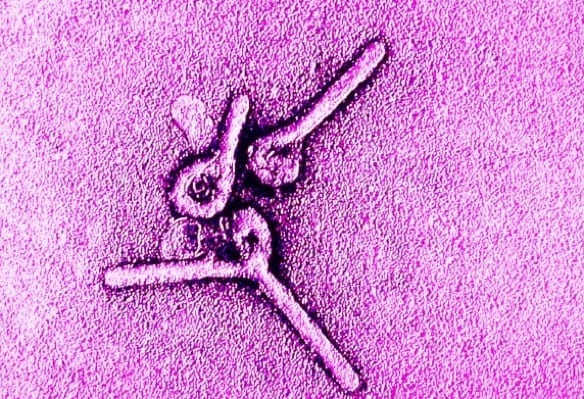Scripps Translational Science Institute will lead a consortium of four partners to develop wearable, wireless health sensors, a wireless vital signs monitoring platform and advanced analytics technology.
The approach is designed to improve health outcomes for Ebola patients, increase the safety of health care workers and reduce risk of spreading the virus to others.
The program will be funded by a grant that was announced this week by the U.S. Agency for International Development.
Joining STSI in the new program are wireless vital signs monitor developer Sotera Wireless, Inc., wireless health sensor developer Rhythm Diagnostic Systems, and personalized predictive analytics technology company PhysIQ. The program is dubbed STAMP2, short for Sensor Technology and Analytics to Monitor, Predict and Protect Ebola Patients. STAMP2 will test the effectiveness of the novel technology to monitor and analyze multiple vital signs of patients either suspected or confirmed to be infected with the Ebola virus.
STAMP2 represents a potential solution to current shortcomings in the management of Ebola patients. For example, the existing approach for monitoring patients suspected of an infection detects the infection only after a patient has become contagious and the virus has the opportunity to spread. And for patients confirmed to be infected, important changes in health status can be missed in periodic vital sign checks, even when carried out every few hours. In both cases, continuous monitoring of multiple vital signs, coupled with sophisticated, personalized data analytics, can lead to much earlier warning and with it, earlier intervention.
“The new approach will provide unprecedented visibility into a patient’s physiology that we believe will be invaluable in improving care in minimizing risk of exposure during an Ebola virus outbreak,” said Steven Steinhubl, M.D., director of digital medicine at Scripps Health. “This will open the door to being able to identify warning signs very early on, when potentially lifesaving care can be provided.”
Patient data will be collected using two innovative wireless monitors that will continuously and remotely monitor and transmit multiple vital signs. By incorporating the ViSi Mobile System from Sotera Wireless and a Band Aid-type sensor – the MultiSense device from Rhythm Diagnostic Systems – into systems of care, patients will be able to be monitored at all times, so that changes in their condition can be recognized sooner, and without needless exposure to health care workers.
Data from the monitors will be transmitted wirelessly to a personalized physiology analytics (PPA) platform developed by physIQ, which will use advanced machine learning algorithms to detect subtle changes in a patient’s physiological profile over time, compared to the patient’s physiological baseline. The PPA will also provide automated analysis, actionable information and guidance to clinical staff for multiple patients simultaneously. This offers the opportunity to detect and act upon changes in a patient’s health status in real time, well before symptoms develop or conditions worsen.
Plans to develop, validate, refine and field test the STAMP2 program are currently under way. Following the completion of these processes, it is expected that a fully functioning turnkey STAMP2 system would be made available for deployment to the appropriate U.S. federal agencies. As currently envisioned, the system would include an appropriately scaled supply of ViSi Mobile and MultiSense wireless health monitoring devices, wireless rugged computers and smartphones and tablets with specially created apps.
The PPA analytic capability will be provided for either cloud-based or local storage and processing, along with a web portal for clinical access to patient status. As currently envisioned, the completed turnkey system would have the capability to accommodate the monitoring of up to 500 patients, but the program could be flexible enough to be ramped up or down as needed.



